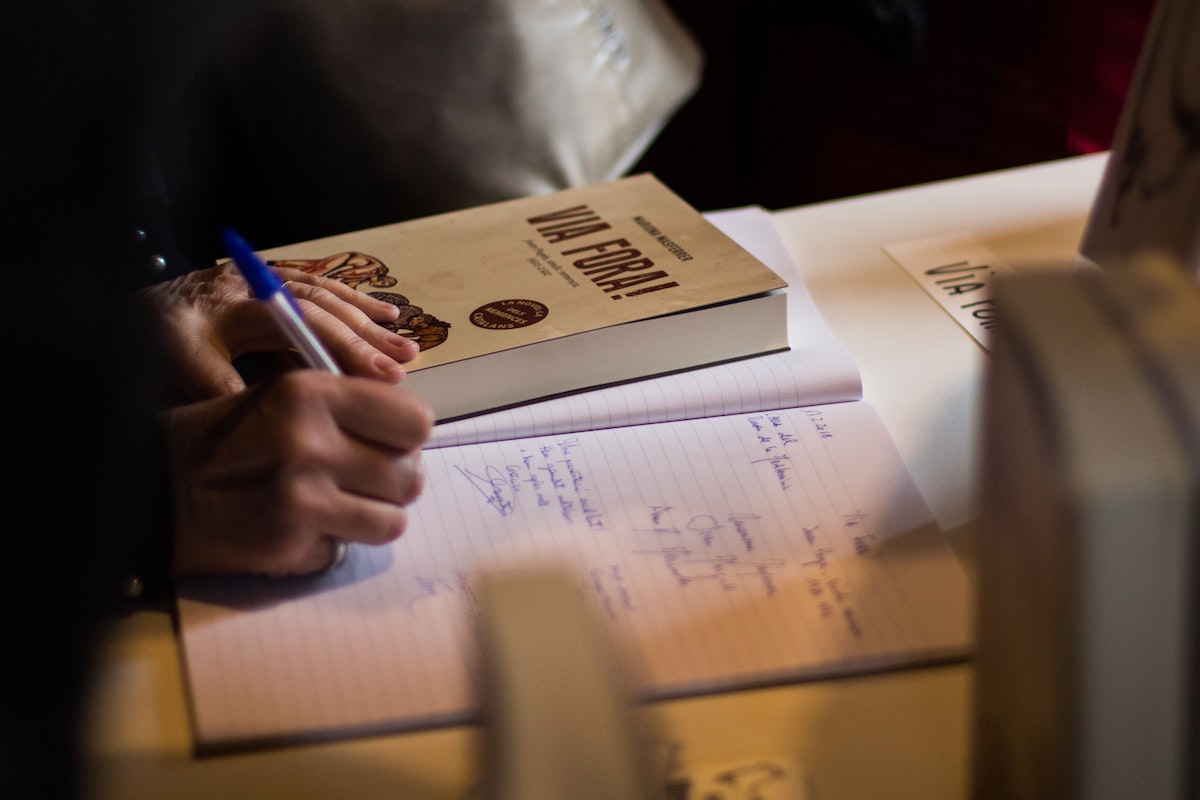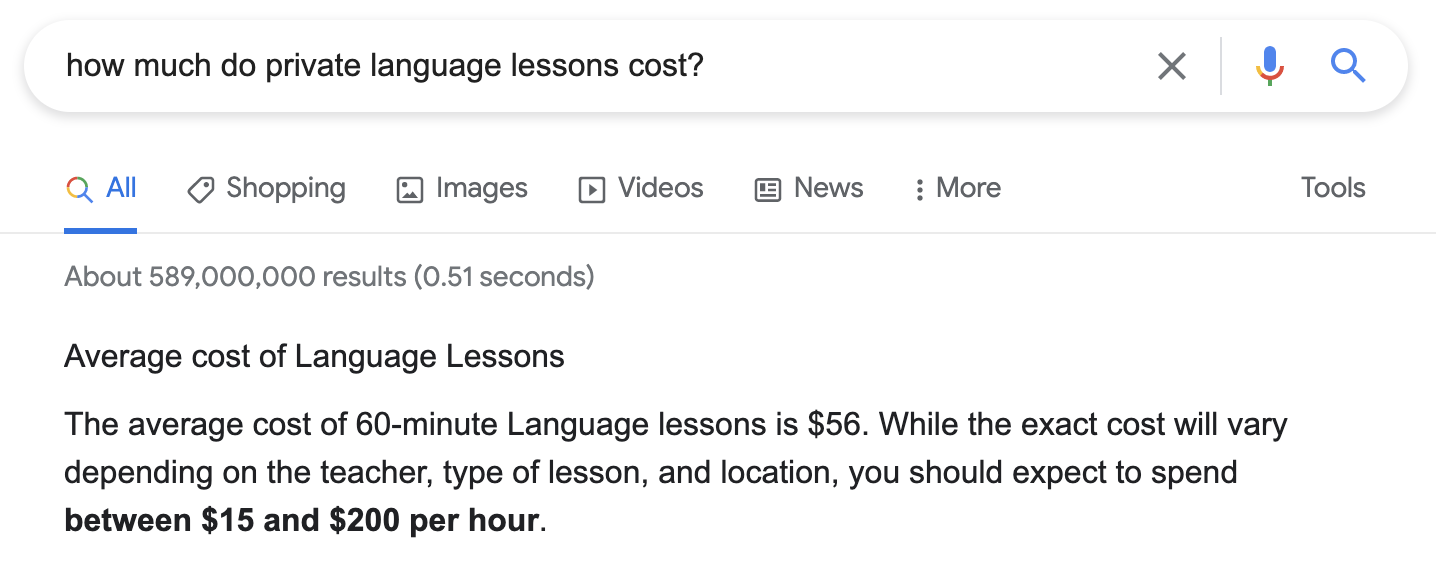
I’m 5 weeks into learning Spanish from scratch and can now have full-fledged conversations with locals in Colombia.
I’ve been asked how I accelerated my learnings and I always say the answer is neither biological nor temporal. I only spend about an hour a day learning Spanish, but I learn unconventionally.
What do I mean by unconventionally?
Back in high school, I learned French conventionally for 4 years. I annotated books, wrote essays, and took exams. But now, if you plopped me in the middle of Paris, I won’t last more than a minute in conversation with a Parisian.
My approach now is optimized and goal-driven. It's split into four parts.
Uno: Skip the curriculum
I don’t use apps, books, or websites that tell me what to learn and in which order. That includes Duolingo and other free content.
I have extremely well-defined goals for learning Spanish:
- I want to meet people and converse with them easily
- I want to get by on a day-to-day basis – order a coffee, buy groceries, ask for directions.
- I want to stay in touch with people through texting
By settings these goals, I’ve automatically created non-goals – things I intentionally don’t want to accomplish.
- I don’t want to read books, essays, or anything longer than a WhatsApp message.
- I also don’t want to write stories, letters, or anything longer than a WhatsApp message.
- And I don’t want to learn how to talk about third-persons not present in a conversation.
Curriculums aren’t well-suited to these goals and non-goals. They prepare you academically more so than socially.
They’re also full of exercises with fictitious people doing things you’ll rarely do yourself. Juan may take his dog to the park and Maria might go to the dentist for a check-up, but how often will you be doing those things – let alone talk about them?
By skipping curriculums, I limit my vocabulary to words relevant to my experiences, goals, and life.
Dos: Take Private lessons
These don’t cost as much as you’d think. The Internet will tell you private language lessons cost $50/hr on average . . .

. . . but you can find good lessons for $5-$10/hr.
The secret is to take classes online with teachers living in cheaper countries. I pay $6/hr for classes with Colombian teachers and they’re very good.
Private lessons are a million times better than language schools and curriculums. I’m constantly flexing my speaking muscles and getting immediate feedback on where I slipped up.
Tres: Add leverage through technology
I schedule private lessons through italki. It’s good for finding the right teacher because I can filter by location, price, reviews, etc. I take the actual lessons on Zoom because it has low latency.
During lessons, I have a Google document opened on the side. I use it to practice writing and jot down unfamiliar words and phrases.
After finishing the lesson, I copy over new vocabulary onto Anki, a flashcard app that uses spaced repetition to help you memorize anything quickly. Later in the evening, I practice Anki flashcards for about 10 minutes.
Cuatro: Apply the 80-20 principle
The fourth and most important part of my approach is to repeatedly do 80-20 analyses.
There are about 150,000 words in the Spanish language. But here’s the kicker: a study on vocabulary frequency showed that…
a limited vocabulary of 1000 words would allow language learners to recognize … about 88% of all lexemes in spoken Spanish. (source)
That means learning 0.67% of all Spanish words would give me about 88% comprehension!
Every time I come across a new word, then, I ask myself, “Is this word in the top 0.67%?”. Only if I’m confident about the answer do I add it to Anki.
Even now, I practice conjugating the same 20-30 verbs in different tenses instead of learning new ones.
Cultivating this kind of selective ignorance is extremely difficult. I constantly have to say no to learning things, especially to my own teacher. Sometimes, that's awkward, but I know it’s for the better.
For the first few weeks, my goal was to create a mental “dictionary” mapping English words → Spanish words. Now, my goal is to speed up the retrieval of words so I’m not fumbling during conversations.
There’s no hacks or optimizations here. I have to practice speaking with different people, which is why I go to language exchanges twice a week.
The more I retrieve the same word in different conversations, the faster its retrieval in the future. The goal is to get to instant retrieval with the top 1000 words. (That’s O(1) access time for any computer scientists reading this.)
Once I get there, I’ll have reached the pinnacle of language learning: I’ll be able to think in the language. Fin.

Written by Aryan Bhasin